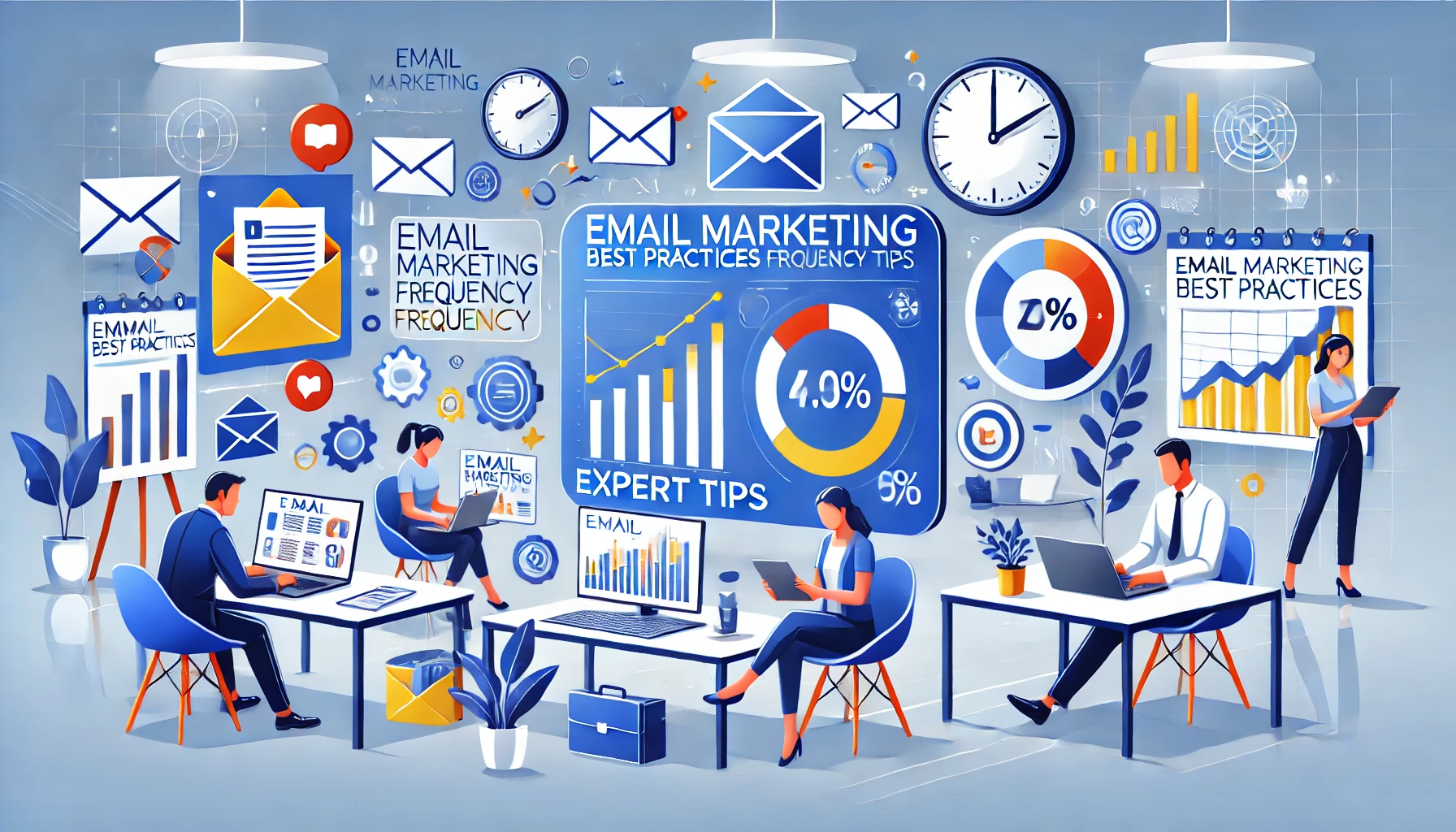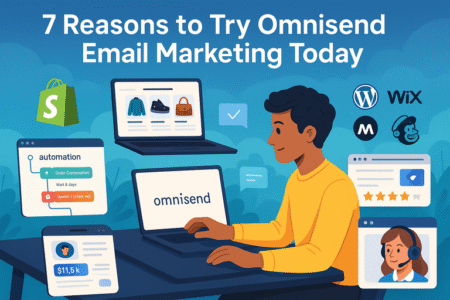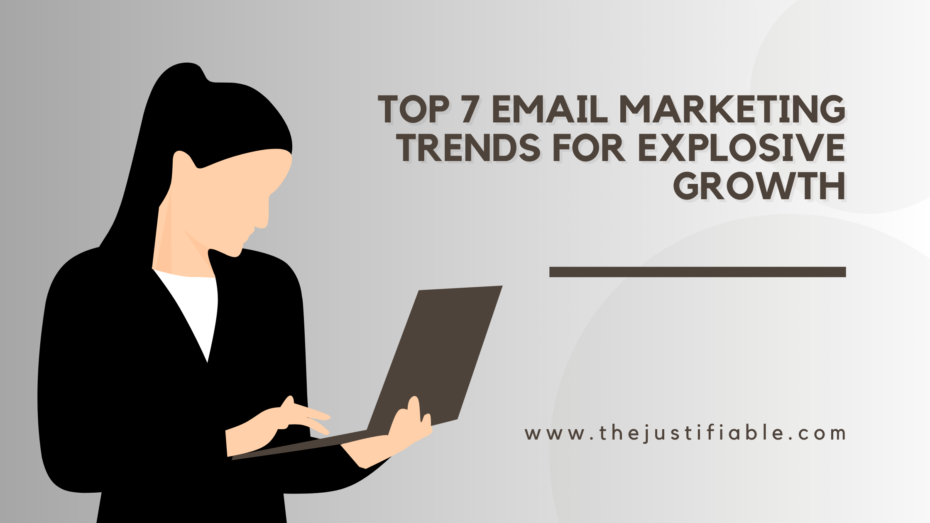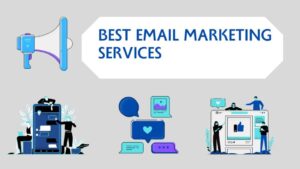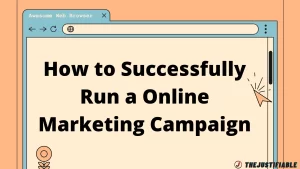Table of Contents
Are you sending too many or too few emails to your audience? Striking the right balance in email marketing frequency is critical for engagement and conversions. In this guide, we’ll explore proven email marketing best practices frequency tips to help you connect effectively with your subscribers and boost your campaign success.
Understanding Email Frequency In Marketing Campaigns
Email frequency is a critical aspect of successful marketing campaigns. It determines how often your audience hears from you, impacting engagement and trust. Striking the right balance helps maintain interest while avoiding overwhelming your subscribers.
What Is Email Marketing Best Practices Frequency?
Email marketing best practices frequency refers to the ideal number of emails sent to your audience to maximize engagement without causing subscriber fatigue. It’s about finding a cadence that aligns with audience expectations while achieving your marketing objectives.
Determining this frequency requires understanding your audience’s behavior. I suggest analyzing how they interact with your emails. Some may prefer weekly updates, while others might engage better with bi-weekly or monthly campaigns.
Consistency is key. Regular communication builds familiarity and trust. I believe setting a predictable schedule, such as sending newsletters every Wednesday, makes your brand more relatable and reliable in subscribers’ eyes.
Tailoring your frequency is essential. For example, a clothing retailer might send promotional emails twice a week, while a B2B company could opt for monthly newsletters. Every industry and audience has unique preferences.
Experimentation often reveals the best frequency. I recommend A/B testing different schedules to see what resonates. Measure open rates, click-through rates, and unsubscribe rates to refine your strategy effectively.
Why Does Frequency Matter To Subscribers?
Email frequency matters because it directly impacts how subscribers perceive your brand and engage with your content. The wrong cadence can lead to disengagement or even unsubscribes, jeopardizing your marketing goals.
Subscribers value their time. I suggest respecting their inboxes by sending relevant content. Sending too many emails can feel intrusive, while too few might make your brand forgettable. Striking the right balance shows you care.
Overcommunication is risky. Bombarding subscribers with daily emails might cause frustration. People often view excessive emails as spam, which can damage your reputation and reduce future engagement.
Under-communication has pitfalls too. I advise against letting too much time pass between emails. If subscribers forget about your brand, they might ignore or delete your next message without reading it.
Empathy plays a role in frequency. Putting yourself in your audience’s shoes helps you gauge their expectations. I suggest using surveys to ask subscribers how often they want to hear from you.
Common Mistakes Marketers Make With Email Frequency
Many marketers struggle with balancing email frequency. Common errors include sending too many emails, being inconsistent, or failing to monitor audience feedback. These mistakes hinder email marketing success.
Sending too many emails alienates subscribers. I’ve seen businesses overestimate their audience’s appetite for content, leading to higher unsubscribe rates and tarnished trust.
Inconsistent email schedules confuse subscribers. One week of daily emails followed by a month of silence creates uncertainty. I recommend maintaining a steady rhythm that feels dependable to your audience.
Ignoring feedback is another misstep. If subscribers express dissatisfaction with your frequency, I believe adjusting your strategy is essential. Ignoring their input risks losing valuable customers.
Failing to segment audiences compounds issues. Different groups have different needs, and I advise against a one-size-fits-all approach. Segmenting ensures each group receives emails tailored to their preferences.
Key Metrics To Monitor For Email Frequency Insights
Monitoring key metrics helps optimize email frequency and gauge its effectiveness. These insights guide adjustments to improve subscriber engagement and campaign outcomes.
Open rates are a vital metric. I suggest tracking how many recipients open your emails. Sudden drops may indicate you’re sending too many emails or not enough compelling content.
Click-through rates reveal how engaging your emails are. Low rates suggest readers aren’t interested in your offers. Experimenting with frequency could help identify the sweet spot.
Unsubscribe rates signal dissatisfaction. A spike might indicate you’re over-communicating. I recommend addressing this immediately by revising your schedule or content strategy.
Survey results provide direct feedback. Asking subscribers about their preferred frequency ensures your approach aligns with their expectations. Use this input to refine your efforts.
Determining The Optimal Email Frequency For Campaigns
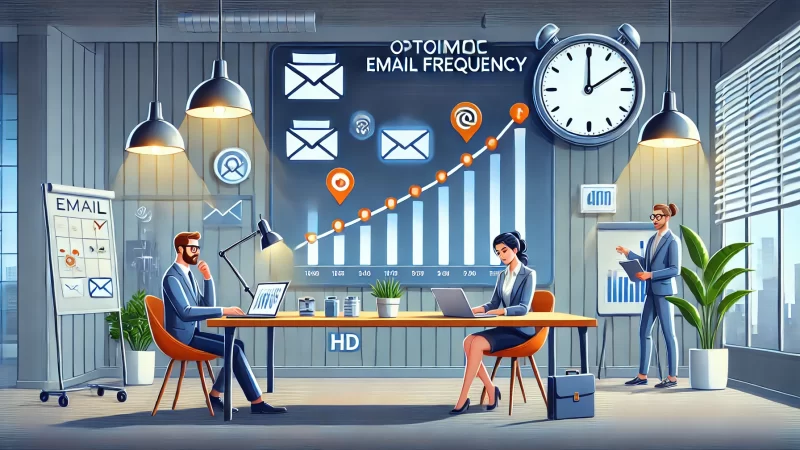
Finding the right email frequency requires a thoughtful approach. It’s a balancing act that combines understanding your audience, testing different cadences, and analyzing data to achieve effective communication.
How Often Should You Email Your Audience?
The ideal frequency depends on your audience and goals. While some industries thrive on daily emails, others may see better results from weekly or monthly campaigns. Testing is essential to find what works best.
Daily emails can work in niches like e-commerce where subscribers expect deals. However, I suggest ensuring each email delivers value to prevent fatigue. High-frequency campaigns should always have a clear purpose.
Weekly emails are a common choice for many businesses. I believe this frequency strikes a good balance, keeping your audience engaged without overwhelming them. Highlight key updates or promotions in each email.
Monthly emails work well for in-depth newsletters. I advise using this cadence for audiences that prefer detailed, less frequent communication. Ensure each email provides comprehensive value to retain their interest.
Event-driven emails should complement your regular frequency. For example, if you send weekly emails, adding a one-time event invitation can engage your audience further without disrupting their expectations.
Factors That Influence Email Frequency Decisions
Various factors shape the decision on how often to email your audience. Understanding these considerations helps craft a frequency that aligns with your subscribers’ needs.
Audience demographics play a role. Younger audiences might prefer frequent updates, while older subscribers might value occasional, high-quality emails. I recommend tailoring frequency based on these insights.
Industry norms set expectations. For example, daily emails might suit fast-paced sectors like retail, but I suggest slower-paced industries like financial services stick to weekly or monthly updates.
Subscriber behavior is a key indicator. Observing open and click-through rates offers clues. I recommend adjusting your frequency if engagement drops over time.
Content availability affects cadence. Sending quality emails requires fresh and relevant content. If content creation is a challenge, I believe reducing frequency ensures you maintain value and quality.
Balancing High Engagement With Low Unsubscribe Rates
Striking a balance between engaging subscribers and avoiding excessive unsubscribes is crucial. A well-planned frequency keeps your audience interested while respecting their inbox.
Engagement thrives on relevance. I suggest focusing on delivering content your subscribers value. This could include personalized recommendations, helpful tips, or exclusive offers.
Unsubscribes often stem from over-communication. Monitoring unsubscribe rates provides insights into when your emails become too much. Adjusting frequency at the first sign of dissatisfaction helps retain your audience.
Surveys help maintain balance. Asking subscribers about their frequency preferences ensures your approach meets their expectations. I’ve seen this foster stronger relationships and loyalty.
Segmenting your audience minimizes unsubscribes. Tailored content ensures subscribers receive only what resonates with them. I advise using segmentation tools to customize frequency effectively.
Testing And Adjusting Email Frequency Dynamically
Testing is essential for refining your email frequency. Experimenting with different cadences and analyzing results allows for data-driven decisions that enhance your campaigns.
A/B testing reveals insights. I suggest testing two frequencies, such as weekly vs. bi-weekly, to see which drives better engagement. Compare metrics like open rates, click-throughs, and unsubscribes.
Feedback loops are invaluable. Soliciting feedback through surveys or follow-up emails helps refine your approach. I believe this builds trust and enhances your connection with subscribers.
Dynamic adjustments are key. Monitoring trends lets you react to changes in audience behavior. For example, if engagement drops, reducing frequency could re-engage your readers.
Iterate and learn. Each test adds to your understanding of what works. I advise keeping a record of results to continually improve your strategy.
Building Trust With Consistent Email Scheduling
Consistency in email scheduling builds trust with your subscribers by ensuring they know when to expect your messages. Regular and predictable communication fosters a reliable relationship, making your brand a consistent part of their lives.
Importance Of A Predictable Email Cadence
A predictable email cadence keeps your audience engaged and anticipates your content. I’ve noticed that subscribers appreciate knowing when they’ll hear from you, whether it’s weekly updates, monthly newsletters, or promotional offers.
Predictability reduces uncertainty. When emails arrive unexpectedly, it can feel disruptive. I suggest setting clear expectations, such as announcing in your welcome email that you’ll be in touch every Friday or the first Monday of each month.
Consistency demonstrates professionalism. I believe that sticking to a regular cadence shows your audience you’re organized and intentional. This builds trust, as subscribers feel confident they can rely on your communication.
Unpredictable emails may lead to disengagement. If weeks pass without contact, subscribers might forget about you. I recommend a steady schedule to maintain recognition and relevance. It keeps your brand top-of-mind.
Subscribers crave value. A predictable cadence ensures they consistently receive content they’ve come to expect. I advise delivering useful insights or updates every time to reinforce their decision to stay subscribed.
Tips For Crafting A Balanced Email Calendar
An email calendar helps you plan content and maintain a consistent schedule. It’s a tool I often suggest for organizing campaigns, aligning with seasonal trends, and ensuring a steady flow of valuable communication.
Start with your goals. Decide on your purpose for each email—promotion, education, or engagement. This focus keeps your messaging clear and ensures you’re delivering content your audience finds meaningful.
Plan around seasons and events. I recommend incorporating holidays, industry events, or product launches into your schedule. These tie your emails to relevant occasions and give subscribers a reason to look forward to your messages.
Space out emails strategically. Avoid overwhelming your audience with back-to-back communication. A balanced calendar includes time gaps that allow your subscribers to digest and act on the content you’ve shared.
Review and adapt your plan. I suggest revisiting your calendar monthly to make improvements based on performance data. This ensures your schedule stays fresh and aligned with subscriber preferences.
How Consistency Boosts Open And Click-Through Rates
Maintaining a consistent schedule improves open and click-through rates by making your emails a trusted, predictable presence in your subscribers’ inboxes. They’re more likely to engage when they know what to expect.
Trust drives engagement. I believe that when subscribers anticipate your emails, they’re more likely to open them. Familiarity with your schedule builds confidence, encouraging readers to prioritize your messages.
Relevance matters. Consistency ensures you’re sending content that aligns with subscriber needs. When your timing is reliable, subscribers are more receptive to the offers or insights you share.
Algorithms favor predictability. I’ve observed that email clients often flag inconsistent senders as spam. A steady schedule signals your emails are legitimate, improving your deliverability and boosting your chances of engagement.
Consistency builds habits. Over time, subscribers become accustomed to checking for your messages. This habitual behavior increases the likelihood of clicks and conversions, turning your emails into a trusted resource.
Segmenting Your Audience For Better Frequency Control
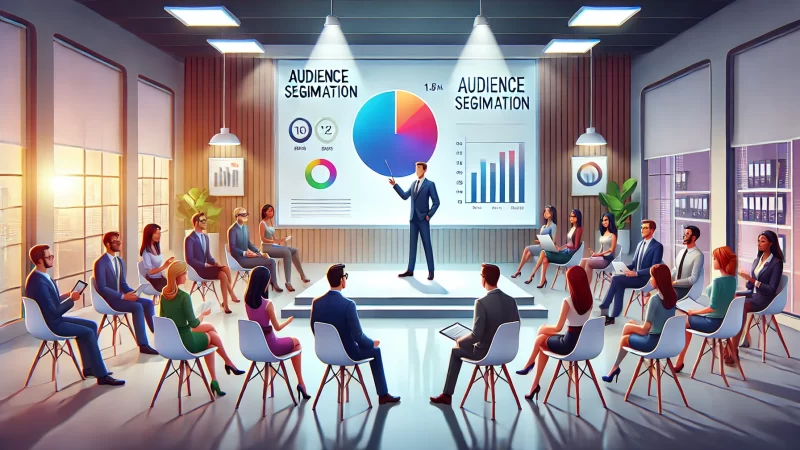
Segmenting your audience allows you to customize email frequency based on subscriber preferences, improving engagement. I suggest using segmentation to send tailored messages that resonate with specific groups, rather than a one-size-fits-all approach.
Why Audience Segmentation Impacts Email Frequency
Segmentation ensures each subscriber receives the right amount of communication. It’s a powerful way to match your email frequency with individual preferences, making your campaigns more effective.
Different subscribers have different needs. A daily deal hunter expects frequent updates, while a casual reader might prefer monthly insights. I recommend using segmentation to address these diverse preferences effectively.
Overcommunication risks alienating certain segments. Sending daily emails to all subscribers may work for some, but others might unsubscribe. Segmenting lets you limit messages to those who genuinely want them.
Under-communication can lose opportunities. Some subscribers may miss out on valuable offers if you don’t email them enough. I advise creating segments for those who engage most often and increasing communication with them.
Segmentation enhances relevance. Tailored email frequency ensures you’re not just meeting subscriber expectations but exceeding them. When readers feel understood, they’re more likely to remain loyal and engaged.
Tailoring Email Frequency For Different Subscriber Groups
Customizing email frequency for each subscriber group improves satisfaction and engagement. It’s a way to provide personalized experiences that feel thoughtful and intentional.
Start with behavior analysis. I suggest tracking how often subscribers open and click on your emails. High-engagement users can handle frequent messages, while low-engagement users might prefer fewer updates.
Consider demographics. Age, profession, and interests influence how often people check their emails. For instance, professionals may prefer fewer emails during work hours. Tailoring frequency to these nuances creates better results.
Adjust for lifecycle stages. New subscribers might appreciate frequent onboarding emails, while long-time subscribers might need less frequent but higher-value content. I recommend aligning your strategy with where subscribers are in their journey.
Use preference centers. Giving subscribers the option to choose their frequency builds trust. I believe this transparency not only improves satisfaction but also reduces the likelihood of unsubscribes.
Tools To Automate Frequency Adjustments By Segment
Automation tools make it easier to manage frequency adjustments across subscriber segments. They save time while ensuring each audience receives the right amount of communication.
Choose the right platform. Tools like Moosend or ActiveCampaign offer advanced segmentation features. I suggest exploring these options to find one that aligns with your goals and budget.
Set frequency rules. Automation allows you to define parameters based on behavior. For instance, I recommend reducing email frequency for inactive users or increasing it for highly engaged segments.
Analyze real-time data. Many tools provide analytics that reveal how subscribers respond to your emails. I believe using these insights can help refine your frequency settings for better results.
Create dynamic segments. Automation enables constant updates to your audience lists based on engagement. This ensures your frequency adjustments stay relevant, helping you build stronger connections with your subscribers.
Leveraging Email Automation For Optimal Timing
Email automation is a game-changer for managing email marketing best practices frequency. It allows you to deliver messages at the right time, improving engagement while freeing you to focus on strategy and creative content.
How Automation Enhances Frequency Management
Automation streamlines email frequency management by allowing you to set and forget campaigns while ensuring personalized communication. I’ve found that it removes guesswork, making it easier to maintain an ideal cadence for different subscriber groups.
Automated tools analyze subscriber behavior. I suggest leveraging platforms that track open rates, clicks, and other metrics to adjust email timing and frequency dynamically. This ensures every message reaches your audience when they’re most likely to engage.
Segmentation pairs well with automation. Grouping subscribers based on their interests or behavior lets you send targeted emails at just the right frequency. I believe this tailored approach builds trust and strengthens relationships.
Automation reduces human error. Without it, over-sending or under-sending emails is a common mistake. I recommend using automation to pre-schedule campaigns, ensuring consistency without the risk of manual oversights.
Scalability is a major benefit. As your subscriber list grows, maintaining the same level of attention to frequency becomes challenging. I advise using automation to handle increased volume without compromising the quality or timing of your messages.
Setting Up Drip Campaigns With Ideal Email Intervals
Drip campaigns, designed to nurture subscribers through timed emails, are one of the best ways to implement email marketing best practices frequency. I recommend starting with a welcome series to set the tone for your communication.
Begin with a short interval. For example, sending a second email two days after the initial signup keeps the excitement alive. I’ve noticed this approach helps build momentum and engagement early in the subscriber journey.
Gradually extend time gaps. Once your audience is familiar with your content, I suggest spacing out emails to weekly or bi-weekly intervals. This keeps your brand relevant without overwhelming their inbox.
Incorporate triggers for relevance. Drip campaigns should adapt based on subscriber actions. For instance, I recommend sending follow-ups if a subscriber clicks a link but doesn’t complete a purchase. This adds value without feeling pushy.
Evaluate and adjust performance. Analyzing how each stage of your drip campaign performs is crucial. I believe consistent monitoring helps fine-tune timing and ensures each message aligns with subscriber preferences and goals.
Avoiding Over-Automation Pitfalls In Email Campaigns
While automation enhances email frequency, over-reliance on it can lead to mistakes that harm engagement. I suggest blending automation with thoughtful oversight to avoid common pitfalls.
Impersonal communication is a risk. Automated emails can feel robotic if not customized. I recommend adding personalization elements like names and tailored content to make subscribers feel valued.
Frequent, irrelevant emails frustrate readers. Without careful planning, automation can flood inboxes with unnecessary content. I believe scheduling fewer, high-quality emails is more effective than bombarding subscribers with too many.
Overlapping campaigns confuse subscribers. Running multiple automated sequences without coordination can lead to mixed messaging. I suggest maintaining a clear overview of all campaigns to ensure cohesion.
Neglecting performance reviews is another pitfall. I advise regularly checking how your automated campaigns perform. This ensures you identify issues early and keep your email frequency aligned with subscriber expectations.
Managing Seasonal And Promotional Email Frequency

Seasonal campaigns require a strategic approach to email frequency. It’s about capturing heightened interest during specific times without overwhelming subscribers, ensuring your communication remains effective and timely.
Adjusting Frequency During Holidays And Events
Holiday seasons often demand increased email frequency to capitalize on audience interest. I recommend planning campaigns that align with the festive mood while keeping subscriber preferences in mind.
Start early. Building anticipation with a pre-holiday email or teaser campaign works well. For example, a “holiday preview” email sent weeks in advance creates excitement without overwhelming your subscribers later.
Focus on value. Every email should provide something useful—whether it’s an exclusive offer, gift guide, or helpful tips. I believe this approach ensures your increased frequency feels purposeful and welcome.
Space out promotional emails. Sending multiple offers daily during holidays might seem tempting, but it can backfire. I suggest spacing emails a few days apart to maintain engagement without causing fatigue.
End with a post-holiday thank-you. A heartfelt note or “new year preview” email after the holidays wraps up your campaign positively. I find it leaves a lasting impression and keeps your brand top of mind.
Avoiding Subscriber Fatigue In Peak Marketing Seasons
Peak marketing seasons can be tricky as audiences face a deluge of emails. Managing frequency carefully ensures your emails stand out while avoiding subscriber fatigue.
Prioritize quality over quantity. I believe focusing on impactful messaging ensures each email resonates. Well-designed, concise, and visually appealing emails perform better than numerous uninspiring ones.
Offer opt-down options. Giving subscribers control over how often they hear from you during busy periods helps build trust. I suggest adding a “holiday frequency preferences” section to your emails.
Monitor engagement closely. Increased frequency demands vigilance. I advise tracking metrics like open and unsubscribe rates daily to ensure your strategy remains effective and well-received.
Surprise subscribers with variety. Including non-promotional content, like holiday recipes or tips, alongside offers keeps your audience engaged. I find this breaks the monotony and adds genuine value to your emails.
Scheduling Follow-Up Emails Without Overwhelming Readers
Follow-up emails are vital for nurturing leads and boosting conversions, but overdoing them can alienate subscribers. Striking the right balance ensures your follow-ups remain effective.
Space out follow-ups thoughtfully. I recommend waiting a few days after the initial email before sending a reminder. This gives readers time to act without feeling pressured.
Limit the number of follow-ups. Two or three reminders are usually enough. Over-sending might make subscribers feel bombarded. I believe sticking to this limit keeps your communication respectful and engaging.
Vary your messaging. Avoid repeating the same pitch in every follow-up. I suggest highlighting different benefits or addressing common objections to keep each email fresh and valuable.
Include a clear exit option. Providing a polite opt-out link for follow-ups shows you respect subscribers’ preferences. This transparency fosters trust, even if they choose to disengage.
Analyzing Data To Refine Email Frequency Strategies
Refining email frequency strategies requires thoughtful data analysis to ensure campaigns are effective and well-received. I recommend monitoring key metrics, testing send times, and incorporating audience feedback to create a strategy that resonates with your subscribers.
Metrics That Help Measure Email Frequency Success
Tracking key metrics offers insight into how email frequency impacts campaign performance. I’ve found that open rates, click-through rates, and unsubscribe rates are invaluable for understanding what works and where adjustments are needed.
Open rates reveal if subscribers are engaging with your emails. A decline might signal that you’re emailing too frequently or at inconvenient times. I suggest experimenting with timing to find when your audience is most active.
Click-through rates indicate how compelling your content is. If clicks are dropping, it’s worth reviewing whether your frequency allows enough time for readers to act. I believe this metric is a clear gauge of campaign value.
Unsubscribe rates are a direct response to frequency dissatisfaction. A sharp increase suggests your cadence might be overwhelming. I advise revisiting your strategy if this happens and incorporating subscriber feedback.
Engagement duration is another metric to watch. Tools that measure how long recipients spend on your emails can help fine-tune frequency. High engagement indicates you’re hitting the mark with content and timing.
Using A/B Testing To Discover Ideal Send Times
A/B testing is an effective method for determining the best times to email your audience. I recommend using this approach to identify optimal send times and refine your email frequency strategy.
Start with a hypothesis. For example, test whether morning emails outperform afternoon ones. I suggest setting clear parameters to track the impact on open and click-through rates effectively.
Use a control group. Sending one version of your email at the usual time while testing a new time slot with another group helps pinpoint what resonates. I believe this comparison provides actionable insights.
Test different frequencies too. For instance, send weekly emails to one group and bi-weekly to another. The data you collect will highlight the cadence that keeps your subscribers most engaged.
Analyze and implement findings. I recommend applying the insights from your A/B tests to adjust your schedule, ensuring you’re meeting subscriber expectations while maximizing campaign success.
Interpreting Feedback To Improve Frequency Practices
Subscriber feedback is a goldmine for improving email frequency practices. Actively seeking opinions ensures your strategy aligns with audience preferences, creating a stronger connection and better campaign results.
Surveys are a direct way to gather feedback. I suggest asking subscribers how often they’d like to hear from you. Offering a few frequency options lets them feel in control and valued.
Look for patterns in responses. If most subscribers prefer fewer emails, it’s a clear sign to reduce your cadence. I believe aligning with these preferences prevents disengagement and improves trust.
Monitor replies to your emails. Sometimes subscribers provide unsolicited feedback about frequency in their replies. I recommend reviewing these responses to identify recurring themes or concerns.
Implement preference centers. Giving subscribers the ability to choose their email frequency fosters goodwill. I suggest promoting this feature as a way to demonstrate that their preferences matter to your brand.
Avoiding Spam Filters While Maintaining Frequency
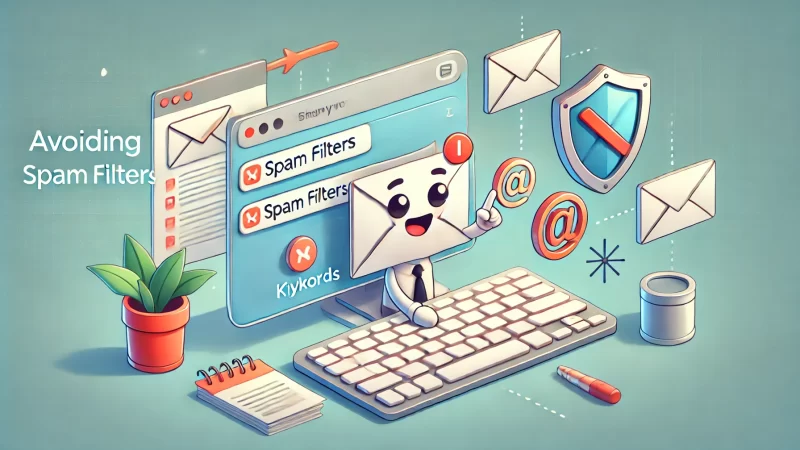
Balancing email frequency while avoiding spam filters is critical to ensuring your messages reach the inbox. I recommend adhering to best practices, monitoring deliverability metrics, and optimizing email content to maintain trust and engagement.
Best Practices For Avoiding High Spam Rates
Avoiding spam filters begins with crafting emails that meet sender reputation standards. I’ve seen that following guidelines ensures your messages are both received and trusted by subscribers.
Keep your content relevant. Spam filters flag emails with generic or misleading subjects. I suggest focusing on clear, specific messaging that aligns with your audience’s expectations.
Avoid trigger words. Overuse of terms like “free” or “urgent” can lead to spam classification. I recommend reviewing your email copy to ensure it stays professional and avoids red flags.
Maintain a clean subscriber list. Sending emails to inactive or invalid addresses harms your sender reputation. I believe regular list cleaning prevents deliverability issues and improves campaign performance.
Use double opt-ins. Requiring subscribers to confirm their email address before receiving content reduces the likelihood of complaints. I suggest implementing this practice for long-term success.
How Frequency Affects Deliverability And Reputation
Email frequency plays a significant role in deliverability and sender reputation. Sending too often or too infrequently can harm your credibility, making it harder for your emails to reach subscribers.
Over-emailing can trigger complaints. I recommend spacing out your emails to avoid overwhelming recipients, as excessive communication often leads to spam reports and damaged reputation.
Under-communication risks inactivity. If subscribers rarely hear from you, email providers might classify your messages as irrelevant. I suggest maintaining consistent communication to avoid falling into this trap.
Frequency impacts engagement metrics. A steady cadence helps improve open rates and clicks, which signal to email providers that your messages are valuable. I believe this directly boosts deliverability.
Monitor bounce rates. High bounce rates harm reputation and can result from over-emailing inactive addresses. I recommend using automation tools to remove invalid addresses from your list.
Steps To Authenticate Emails For Better Trust Scores
Email authentication enhances deliverability by proving your messages are legitimate. I advise implementing authentication protocols to improve your trust score with email providers and reduce the risk of being marked as spam.
Start with SPF and DKIM. These protocols verify that your emails come from authorized servers. I suggest enabling them to ensure providers recognize your messages as genuine.
Use DMARC for added security. This protocol prevents unauthorized use of your domain for email. I believe it’s an essential step for protecting your sender reputation.
Ensure your branding matches. Using a consistent “From” name and email address builds familiarity. I recommend aligning these details with your website and branding for added trust.
Monitor authentication reports. Tools that analyze SPF, DKIM, and DMARC performance provide valuable insights. I suggest reviewing these regularly to identify and fix issues affecting deliverability.
Developing Long-Term Email Frequency Plans
Crafting long-term email frequency plans ensures consistent and effective communication with your subscribers. I suggest focusing on scalable strategies, aligning your frequency with business objectives, and regularly re-evaluating preferences to keep your campaigns relevant and engaging.
Creating Scalable Strategies For Subscriber Growth
Scalable strategies are essential as your subscriber list expands. I recommend building a flexible email frequency plan that adapts to the needs of a growing audience without sacrificing personalization or content quality.
Start with segmentation. As your list grows, segmenting subscribers allows you to send tailored content at optimal frequencies. I believe this helps maintain high engagement while managing increasing complexity in communication.
Leverage automation. Tools like autoresponders and drip campaigns scale effortlessly with subscriber growth. I suggest integrating automation to handle frequency adjustments dynamically as your audience evolves and their preferences change.
Monitor list growth trends. Rapid subscriber increases can strain your frequency strategy. I advise tracking these trends closely to ensure your plan adjusts seamlessly to accommodate new audience segments and expectations.
Adapt as preferences shift. A growing audience means diverse needs. I recommend periodically reassessing what works for different groups, using data to refine your frequency for maximum engagement and satisfaction.
Aligning Frequency Goals With Business Objectives
Aligning your email frequency with business goals ensures your campaigns drive meaningful results. I believe this approach keeps your communication purposeful and focused on achieving measurable outcomes.
Define your priorities. Whether it’s increasing sales, driving website traffic, or building brand loyalty, I recommend clarifying what each email campaign should accomplish. This shapes your frequency and content strategy effectively.
Balance promotional and informational emails. Overemphasis on promotions can alienate subscribers. I suggest blending valuable content with offers to keep your audience engaged while advancing your business goals.
Incorporate seasonal objectives. Aligning frequency with holidays, product launches, or industry events can boost relevance. I advise using these opportunities to craft well-timed emails that align with both subscriber interests and your targets.
Regularly review outcomes. Track key performance metrics to see if your frequency supports your objectives. I recommend tweaking your approach based on results to ensure long-term success.
Periodically Re-Evaluating Frequency Preferences
Subscriber preferences evolve, making periodic re-evaluation crucial for sustaining engagement. I suggest creating feedback loops and analyzing metrics to adjust your frequency strategy as audience needs change.
Conduct regular surveys. Asking subscribers how often they want to hear from you provides valuable insights. I recommend including frequency options in these surveys to empower your audience to shape your strategy.
Monitor engagement signals. Metrics like open rates and clicks reveal shifts in subscriber behavior. I advise paying attention to these indicators to spot when adjustments might be necessary.
Test alternative schedules. Periodic testing helps identify if a new frequency works better. I believe A/B testing is an effective way to determine optimal timing without risking subscriber satisfaction.
Implement flexible frequency options. Giving subscribers control over their preferences through a preference center fosters loyalty. I suggest promoting this feature to make your audience feel valued and heard.


